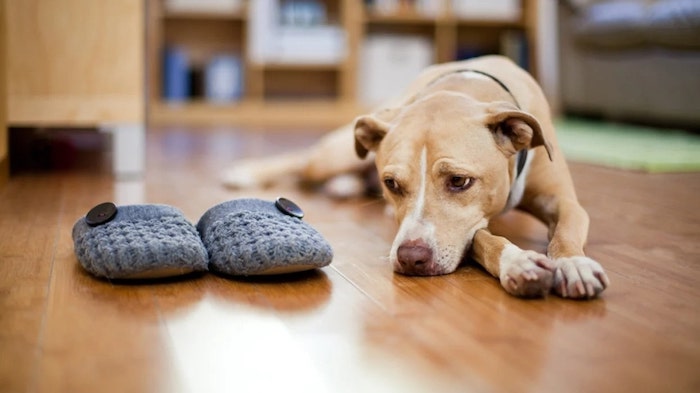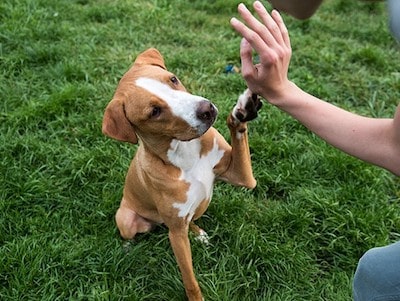As devoted and loyal companions, dogs often form deep emotional bonds with their human counterparts. However, this unwavering attachment can sometimes lead to a condition known as separation anxiety. Separation anxiety is a common behavioral issue in dogs that manifests when they are separated from their owners or left alone for extended periods of time.
Separation anxiety can be distressing for both dogs and their owners. It is important to recognize and address this issue to ensure the well-being of our furry friends.

In this article, we will delve into the nuances of separation anxiety in dogs, explore its signs and symptoms, emphasize the significance of training, and provide effective techniques to help alleviate this condition.
Understanding the root causes and behavioral patterns associated with separation anxiety is crucial for any dog owner.
By gaining insight into the factors that contribute to this condition, we can better empathize with our canine companions and develop strategies to help them overcome their distress.
Whether you have a mischievous puppy or a seasoned adult dog, understanding separation anxiety is an essential step in fostering a harmonious and balanced relationship.
So, let’s dive in and discover the world of separation anxiety in dogs!
Signs and Symptoms of Separation Anxiety
Separation anxiety in dogs can manifest in various ways, and it’s important for pet owners to be able to recognize the signs and symptoms. Understanding these behaviors is a crucial step in effectively addressing and managing separation anxiety in your furry friend.
Destructive Behavior: One of the most common signs of separation anxiety is destructive behavior. When a dog experiences anxiety upon being left alone, they may resort to chewing on furniture, shoes, or other items in the house. This destructive behavior is often an attempt to alleviate their stress and can result in significant damage to your belongings.
Excessive Barking or Howling: Another telltale sign of separation anxiety is excessive barking or howling. Dogs with separation anxiety may vocalize their distress by barking or howling incessantly when left alone. This behavior can be disruptive and may cause tension with neighbors or family members.

Pacing or Restlessness: Dogs suffering from separation anxiety may exhibit restlessness and pacing behavior. They may constantly move around the house, unable to settle down, as they anxiously await their owner’s return. This behavior can be a clear indication of their anxiety and discomfort.
Urinating or Defecating Indoors: In some cases, dogs with separation anxiety may urinate or defecate indoors, even if they are fully house-trained. This behavior is a result of extreme stress and anxiety.
Coming home to find accidents in the house can be frustrating for pet owners, but it’s important to remember that it is a symptom of their anxiety and not a deliberate act of defiance.
Recognizing these signs and symptoms is the first step towards addressing separation anxiety in your dog. Puppy training near me can help you understand and manage these behaviors effectively. By providing the right training and support, you can help your furry companion feel more secure and comfortable when left alone.
Importance of Training for Separation Anxiety
Separation anxiety in dogs can be a distressing experience for both the furry friend and their human companions. The good news is that with the right training techniques, this anxiety can be effectively managed. Training plays a crucial role in addressing separation anxiety and ensuring the overall well-being of your beloved pet.
Creating a Safe and Secure Environment
One of the key aspects of training for separation anxiety is creating a safe and secure environment for your dog. This involves setting up a designated space where your dog can feel comfortable and calm when left alone. Establishing a den-like area with a cozy bed, toys, and familiar scents can help alleviate anxiety and provide a sense of security.
Building Trust and Confidence
Training also focuses on building trust and confidence between you and your canine companion. Establishing a strong bond based on trust and positive reinforcement can help reduce the anxiety associated with separation.
Consistent training sessions, filled with praise, rewards, and gentle guidance, foster a sense of security and promote a healthy relationship.
Reducing Stress and Anxiety
Another crucial benefit of training is the reduction of stress and anxiety in dogs with separation anxiety. Implementing relaxation techniques such as deep breathing exercises and calming routines can help soothe your furry friend’s nerves.
Incorporating activities like puzzle toys, interactive games, and scent training can redirect their attention and provide mental stimulation, reducing anxiety levels.

By investing time and effort into training, you are not only addressing separation anxiety but also enhancing your dog’s overall well-being. Remember, patience and consistency are key when it comes to training for separation anxiety.
With the right techniques and a supportive environment, you can help your furry friend feel more secure and content, even when you’re not by their side.
If you’re looking for professional guidance and support in training your dog, there are various options available. You can explore local dog trainers, who provide personalized training sessions tailored to your dog’s specific needs. Additionally, dog training facilities offer a structured environment where your dog can socialize and learn from experienced trainers.
For those who prefer the convenience of online resources, online training programs provide step-by-step guidance and tutorials. You can also consider joining support groups and workshops where you can connect with other dog owners facing similar challenges and gain valuable insights.
Remember, every dog is unique, and finding the right training approach may require some trial and error. With patience, dedication, and the support of qualified professionals, you can help your furry friend overcome separation anxiety and thrive in their daily routine.
Training Techniques for Separation Anxiety
Separation anxiety in dogs can be a challenging issue to address, but with the right training techniques, it is possible to help your furry friend overcome their anxiety and feel more comfortable when left alone. Here are some effective methods that can make a significant difference in your dog’s behavior and well-being.
Gradual Desensitization
One powerful technique for tackling separation anxiety is gradual desensitization. This approach involves gradually exposing your dog to the triggers of their anxiety in a controlled and systematic manner.
By starting with short periods of separation and gradually increasing the duration over time, you can help your dog become more accustomed to being alone. This process helps them learn that being apart from you is not a cause for panic or distress.
Counterconditioning
Counterconditioning is another useful technique that can help your dog develop positive associations with being alone.
The goal is to replace their negative emotions with positive ones by pairing the experience of being alone with something enjoyable, such as a special treat or engaging toy.
Over time, your dog will learn to associate being alone with positive experiences, reducing their anxiety. This technique can be highly effective in changing your dog’s emotional response to separation.

Crate Training
Crate training is a widely recommended method for addressing separation anxiety. Dogs are den animals by nature, and a properly introduced crate can provide them with a sense of security and comfort.
By gradually getting your dog accustomed to the crate and associating it with positive experiences, such as treats or their favorite toys, you can create a safe space for them when you’re away.
Crate training can help alleviate separation anxiety by providing your dog with a secure and familiar environment.
Interactive Toys and Treats
Engaging your dog’s mind and senses can be a great way to distract them from their anxiety when you’re not around. Interactive toys and treat-dispensing puzzles can keep their minds occupied and provide mental stimulation, helping to alleviate boredom and anxiety. These toys can also serve as a positive distraction and redirect your dog’s focus away from their anxiety.
Medication and Professional Help
In some cases, medication may be necessary to manage severe separation anxiety. If your dog’s anxiety is significantly impacting their quality of life, consulting with a veterinarian or a professional dog trainer who specializes in separation anxiety can provide valuable guidance.
They can assess your dog’s specific needs and recommend appropriate medication or other professional interventions. Remember, it’s crucial to seek expert advice before considering medication as a solution for your dog’s separation anxiety.
By implementing these training techniques, you can help your dog overcome their separation anxiety and create a more balanced and relaxed state of mind.
Remember, each dog is unique, and it may take time and patience to find the right approach that works best for your furry companion.
With consistency, positive reinforcement, and perhaps the assistance of a professional, you can help your dog develop coping mechanisms and feel more at ease when left alone.
Now that you understand the training techniques for separation anxiety, let’s explore some nearby options for dog training. Stay tuned for the next section!
Liked this article? Check out our other helpful articles on puppy training near me and service dog training near me to ensure a well-rounded education for your four-legged companion.
Finding Nearby Dog Training Options
When it comes to addressing separation anxiety in dogs, finding the right dog training options can make all the difference in helping your furry friend overcome their anxiety and lead a happier, more balanced life. Local dog trainers, dog training facilities, online training programs, and support groups and workshops are all valuable resources that can provide effective solutions to help manage and alleviate separation anxiety in dogs.
Local Dog Trainers
Local dog trainers are an excellent choice for those seeking personalized, one-on-one attention for their canine companions.
These professionals have a deep understanding of canine behavior and can tailor their training methods to suit your dog’s specific needs.
Whether you’re looking for puppy training near me or specialized training such as service dog training near me, local trainers can provide expert guidance and support.
Dog Training Facilities
For a more immersive training experience, dog training facilities offer comprehensive programs designed to address separation anxiety and other behavioral issues.
These facilities often provide a structured environment where dogs can learn and socialize with other canines under the guidance of experienced trainers.
In addition to separation anxiety training, many facilities offer specialized programs like clicker training for dogs, agility training for dogs, and leash training for dogs.
Online Training Programs
In today’s digital age, online training programs have gained popularity as a convenient and accessible option for dog owners. These programs provide a wealth of resources and training materials that can be accessed from the comfort of your own home.
From basic obedience training to behavior modification techniques, online training programs offer a flexible and cost-effective way to address separation anxiety in dogs. They also provide a great option for those who may not have access to local trainers or training facilities.
Support Groups and Workshops
Sometimes, finding support from fellow dog owners who have experienced or are currently dealing with separation anxiety in their own pets can be incredibly valuable. Support groups and workshops offer a supportive community where you can share experiences, gain insights, and learn from others who are going through similar challenges.
These groups often provide a platform for discussing training techniques, sharing success stories, and seeking advice from professionals and experienced dog owners alike.
They can also be a great opportunity to learn about additional training options such as behavior training for dogs, dog obedience classes near me, therapy dog training near me, and private dog trainers near me.
In conclusion, finding nearby dog training options is crucial when it comes to addressing separation anxiety in dogs. Whether you opt for local trainers, training facilities, online programs, or support groups and workshops, the key is to find a solution that works best for you and your furry friend.
Remember, with the right training and support, your dog can overcome separation anxiety, leading to a happier and more harmonious bond between you both. So don’t hesitate to explore the resources available to you and embark on this journey towards a calmer, more confident canine companion.
Note: If you’re interested in learning more about crate training for dogs, be sure to check out our informative article on the subject.
Conclusion
In conclusion, it is crucial to address separation anxiety in dogs through effective training techniques. Understanding the signs and symptoms of separation anxiety is the first step towards helping your furry friend. Destructive behavior, excessive barking or howling, pacing or restlessness, and urinating or defecating indoors are common indicators of this condition.
Training plays a vital role in managing separation anxiety and can greatly improve your dog’s well-being. By creating a safe and secure environment, you can provide your dog with a sense of comfort and stability. Additionally, building trust and confidence through positive reinforcement techniques can help your dog feel more at ease when left alone. This can be achieved through consistent training exercises and rewarding good behavior.
Reducing stress and anxiety is another crucial aspect of training for separation anxiety. Gradual desensitization, where you gradually expose your dog to being alone for short periods and gradually increase the time, can help them become more comfortable with your absence. Counterconditioning is also effective, as it involves associating positive experiences with being alone, such as interactive toys and treats.
Crate training can provide a safe space for your dog and can help them feel secure when you’re not around. Introducing them to the crate gradually and using positive reinforcement can make it a positive and comforting space for them. However, it’s important to note that crate training may not be suitable for every dog, so consulting a professional trainer or veterinarian is advisable.
In some cases, medication and professional help may be necessary to alleviate severe separation anxiety. Consulting with a veterinarian or a qualified dog behaviorist can provide valuable guidance and support.
When it comes to finding nearby dog training options, local dog trainers and dog training facilities can provide personalized and structured training programs. Online training programs are also a convenient option, offering flexibility and accessibility from the comfort of your own home. Additionally, support groups and workshops can provide a supportive community where you can share experiences and learn from others facing similar challenges.
Remember, every dog is unique, and what works for one may not work for another. Patience, consistency, and positive reinforcement are key when training a dog with separation anxiety. With the right training techniques and support, you can help your dog overcome separation anxiety and lead a happier, more balanced life.
For more information on puppy training near me, service dog training near me, clicker training for dogs, agility training for dogs, leash training for dogs, behavior training for dogs, dog obedience classes near me, therapy dog training near me, or private dog trainers near me, feel free to explore the links provided.

Ellis is a retired veterinary technician and full-time contributor at DogLovesBest. He likes writing about pet health care tips and reviews the products that are useful for fidos on a daily basis.
Ellis also guardians a Siberian husky, Nova, and a cat named Shilly. They all live happily with his wife Ammy, and both the dogs on a seaside apartment in Queens, NY.
